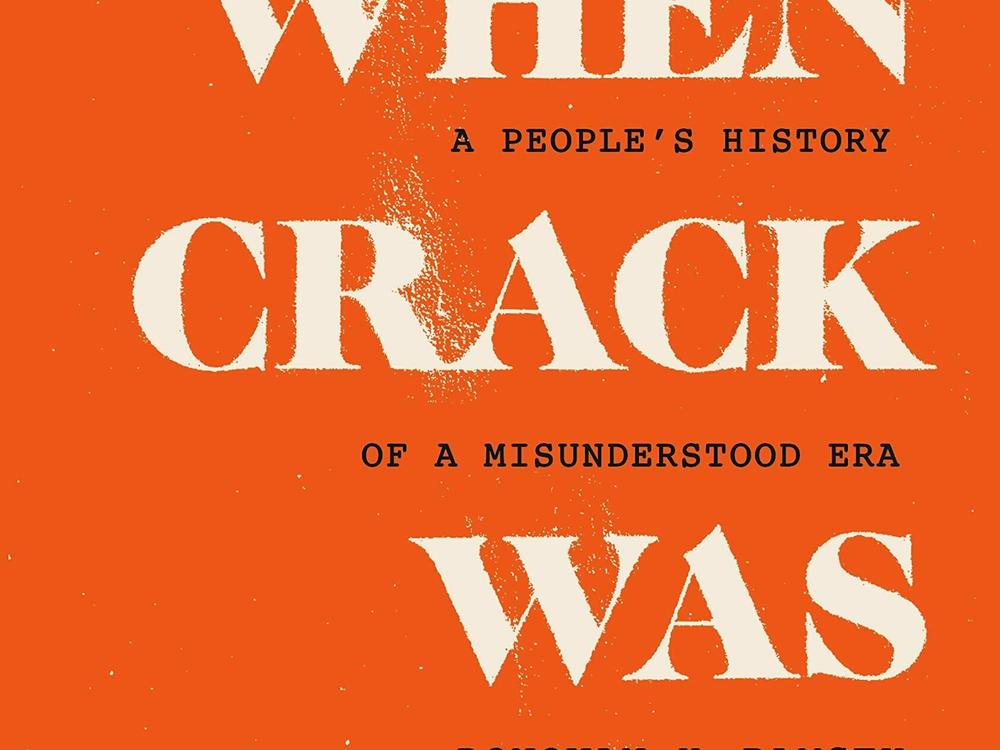Section Branding
Header Content
'When Crack Was King' follows four people who lived through the drug epidemic
Primary Content
In the introduction to his new book, When Crack was King: A People's History of a Misunderstood Era, journalist Donovan X. Ramsey recalls how during his childhood in the early 1990s, the term "crackhead" was used as an insult.
"I suppose we made it a slur," he writes, "because we feared what it represented, a rock bottom to which any of us could sink. That's what children do when they're in search of power over things that frighten us. We reduce them to words, bite-size things that can be spat out at a moment's notice."
If only that same urge wasn't so common among adults, especially those in positions of power. But as Ramsey details in King, the crack epidemic is (still) misunderstood in large part due to the willful ignorance reflected in mainstream media coverage in the 1980s and '90s, as well as the political convenience of soundbites like "crack baby" and "superpredator," which were actively used to pass legislation that further policed and controlled poor communities of color, and Black people in particular.
Crack is the common term for cocaine that's been processed using baking soda or ammonia and water in order to make it smokable. This method of cocaine use is highly addictive in part because it provides an intense and fast high that requires frequent use in order to maintain. As with other drug epidemics, there is no single event that led to crack's popularity and its disastrous effects on so many of its users and dealers.
Rather, the epidemic spread due to a multitude of reasons such as government policies that economically isolated poor communities of color, the so-called War on Drugs and its focus on criminalization, and the falling price of cocaine and the ease with which it could be turned to crack. Ramsey focuses, too, on another important element: grief. The generational trauma and grief Black Americans live with is part of that, of course, but Ramsey focuses as well on the "profound grief [which was the] result of everything they lost in the sixties and seventies — assassinations of leaders, destruction of their communities from riots, a Civil Rights Movement that cost them so much but ultimately missed the mark securing opportunity and freedom."
When Crack was King follows four people who lived through the epidemic in various ways. Lennie Woodley, now a substance abuse counselor for LA county, grew up in a tumultuous and abusive home, with a mother who yelled and beat her and an uncle who started as a source of solace before he began molesting her. She started using cocaine, first as powder and then as crack, during her early adolescence, and spent nearly three decades in the grips of her addiction. Through her story, Ramsey looks at how "[w]omen users, black women in particular, fell to the absolute lowest rung on the nation's social ladder" and how these women users had "fewer avenues for income and were often steered into sex work, if they weren't sex workers already."
Ramsey also follows the stories of Elgin Swift and Shawn McCray, two men who worked for a time as dealers, though in different ways and with different scopes. Swift grew up in Yonkers, NY, with a single father who became addicted to crack while Swift was still young, leaving him to largely fend for himself, which included, eventually, dealing small amounts of crack. McCray, on the other hand, was part of Zoo Crew, a now-legendary drug trafficking ring in Newark, NJ, which spun off to become a local apparel brand name as well as, eventually, the name of McCray's successful youth basketball program. Through these men's narratives, Ramsey highlights the nuances of drug dealing, how for many it's less a chosen career and more a way to make money when there are no other jobs to be found. Additionally, despite the well-worn stereotype of morally corrupt dealers, these men weren't trying to broaden their customer base by encouraging addiction in young people. By the height of the crack epidemic in the mid-1980s, there simply weren't many casual users of the drug, and young people in the 1990s were disdainful of the substance and turning away from it and heroin as well.
The final character Ramsey follows is Kurt Schmoke, who served as the mayor of Baltimore during much of the 1980s and who advocated for drug decriminalization long before there was support for such an approach.
Threaded through the four character studies are details of the era's politics, the crime bills that led to the drastic increase in mass incarceration, legacy media's insistence on sensationalizing crack and deploring its users, the ineffective War on Drugs and its disastrous consequences, and more, always in clear prose that focuses as much as possible on the flesh and blood individuals who were harmed by the epidemic.
An excellent work of people-first journalism, When Crack Was King offers not only a vivid and frank history, but points to the way communities tend to save themselves even as they're being actively targeted by state policy and violence. The crack epidemic may be over, Ramsey notes at book's end, but drug fads and epidemics come and go, and our government and media apparatus must learn to respond to them better — which, judging by the coverage of and response to the opioid epidemic, may yet take some time.
Ilana Masad is a fiction writer, book critic, and author of the novel All My Mother's Lovers.
Copyright 2023 NPR. To see more, visit https://www.npr.org.

